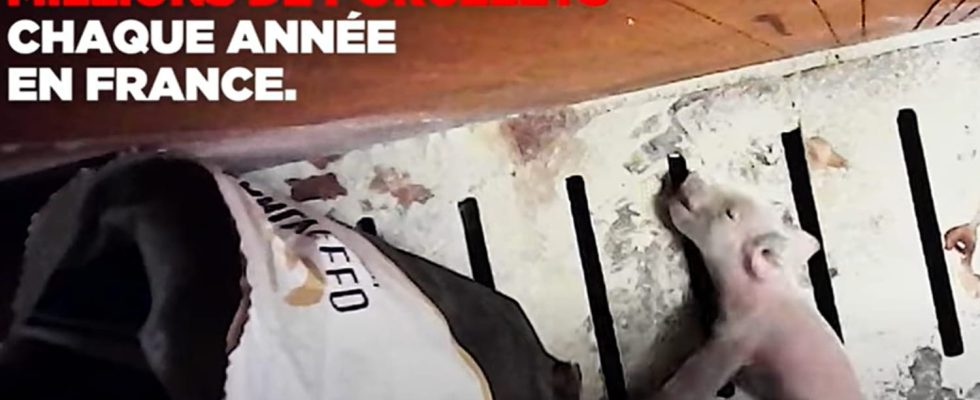The L214 association is broadcasting shocking images this Thursday, October 5, filmed in an intensive breeding farm in Corbeil, in Marne, which belongs to the Cirhyo cooperative.
This is not the first time that L214, an animal rights association, has alerted public opinion to the violent practices of certain intensive livestock farms. This Thursday, October 5, L214 publishes a new investigation on the way in which pigs are treated in an establishment managed by the Cirhyo cooperative, which brings together 660 breeders and which works with the Tradival slaughterhouses, in Corbeil in Marne.
The association denounces extremely violent and sometimes illegal practices detected in this intensive breeding: killing of piglets by slamming their heads against the ground, systematic cutting of tails, live castrations, death without prior stunning, cleaning and rendering defects.
Images posted online are very shocking and can offend the most sensitive people. They report on the abuse and mistreatment which should be the subject of an investigation soon: L214 filed a complaint with the prosecutor of the Châlons-en-Champagne judicial court.
Herta singled out, a dangerous antibiotic detected
L214 specifies in a press release released this Thursday that “the meat produced by the cooperative is mainly sold in large and medium-sized supermarkets, mainly under the Herta brand, and to artisan butchers”.
The association also indicates that it noted in this breeding “9 different antibiotics belonging to 8 distinct families, including colistin, a substance classified by the WHO as critically important and a major priority for human health in the context of surveillance of the ‘antibiotic resistance’.
The farm has around 4,000 animals, L214 further specifies, “locked in an unsanitary atmosphere (dust, flies, excrement in the drinking water, dead among the living), often in individual cages or in collective boxes crowded together on others”. And he added: “Thousands of maggots swarm in the rendering bins where the bodies of dead animals are in a state of very advanced putrefaction.”
